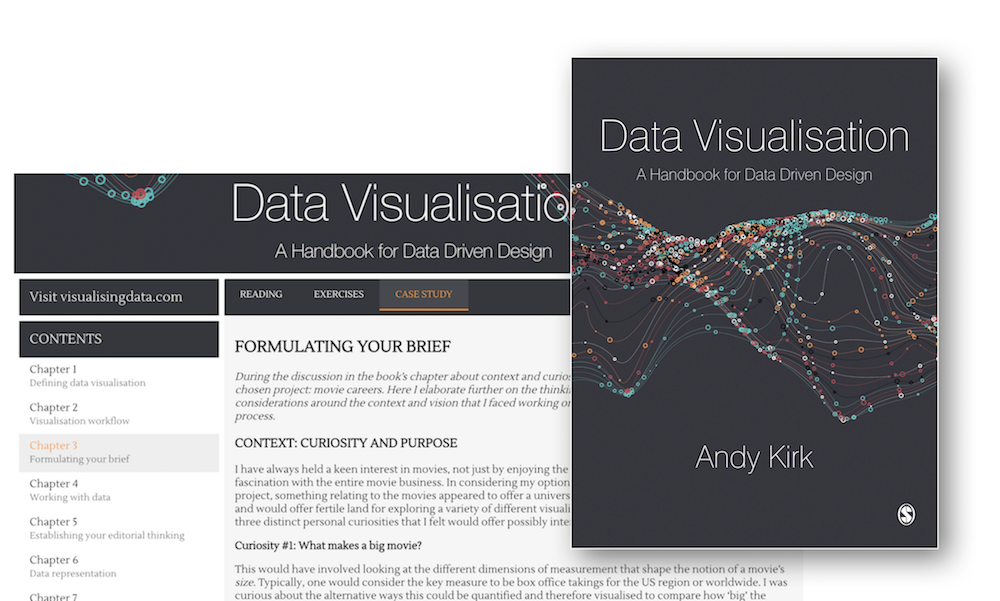Today I am delighted to share details of a new special section of my website. The purpose of this site is to provide a wide range of companion resources to supplement the learning on offer in my newly published book. Whilst aimed at the book’s readers (and it will make most sense to readers), the resource is entirely accessible and freely open to all visitors.
There are three strands of additional content for readers to work through: ‘Reading’, ‘Exercises’ and ‘Case Study’, here’s an outline of what they cover:
READING
The Reading sections offers a curated collection of recommended links to web articles, papers and texts, as well as suggested visualisation projects that are associated with the topics covered by each chapter. They might not always directly relate to a specific passage in the book, rather they will tend to add further perspectives to build up your knowledge. There are also links to the source locations of all images included, which is especially useful for those images relating to interactive projects and any original images that only appeared in the book as a cropped excerpt. In addition, this strand of supplementary content includes a selection of hand-picked tutorials to help you learn techniques and tools specific coverage of the chapter. The collection of links will be constantly refined as and when new, relevant material is discovered.
EXERCISES
The Exercises sections offer a range of conceptual and practical tasks for you to consider undertaking to help substantiate your learning from the book. The nature of the challenges posed varies considerably, some involve sketching, others require you to assess visualisation work, and several relate directly to raw datasets. These challenges aren’t based around quizzes, for which the correct answers are revealed elsewhere: these are exercises for you to undertake and experience alongside the topics covered in related sections of book.
CASE STUDY
The Case Study content provides a stream of narrative detailing the behind-the-scenes process that went in to the development of the ‘Filmographics’ project, which was created exclusively to accompany the publication of this book. The purpose of this case study is to help demonstrate the practical application of the design process proposed through this book. (There are no case study sections for Chapters 1 and 11).


